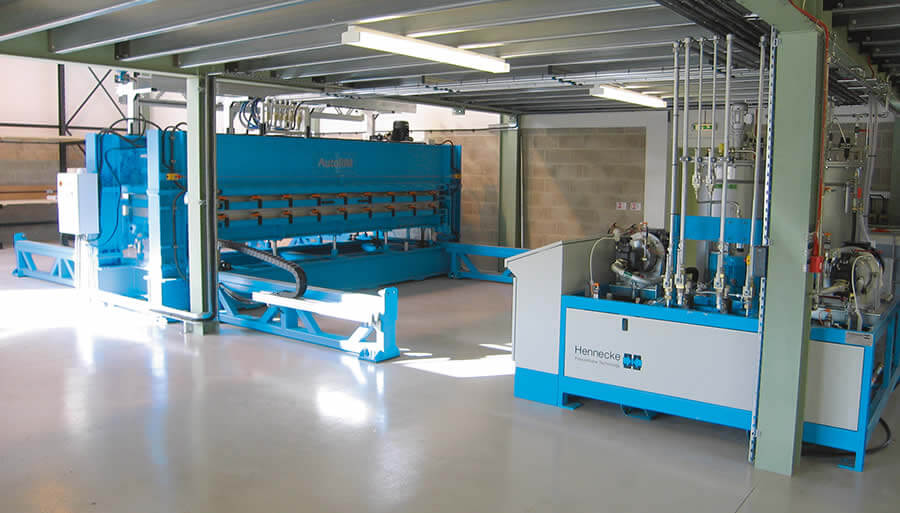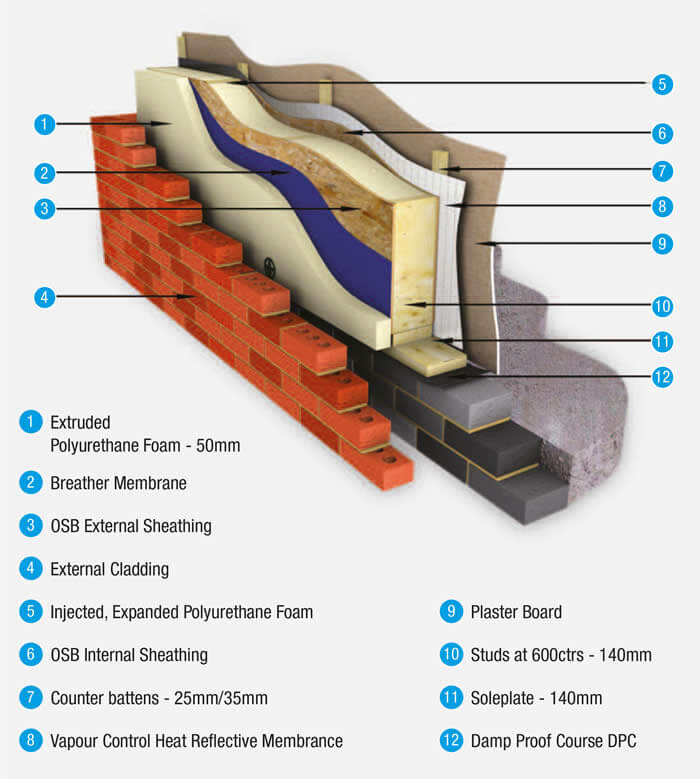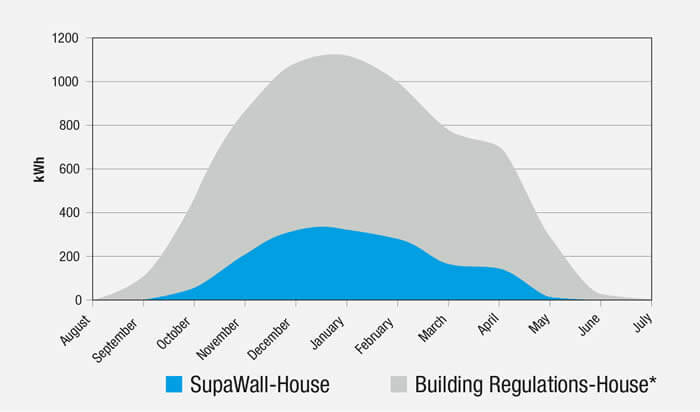Insulating prefabricated houses with PU sandwich panels covers half the rent
As part of the current discussion about energy and the need to minimise CO2 emissions, effective insulation of buildings is becoming increasingly important.Whereas many prefabricated houses here continue to be insulated with mineral wool and cork, in Great Britain the construction industry is one step ahead. PU sandwich elements have been used to insulate prefabricated houses for about five years now. The trend is now conquering Germany – slowly but surely!

Fifty percent of the energy used in the European Union goes on heating houses. So it is clear that good insulation can save a great deal of energy. But what is efficient insulation? Scotframe Limited, a Scottish timber frame house company, has opted for PU sandwich elements. It makes its panels with Hennecke technology and then puts them in its houses, dramatically reducing costs.
The British firm SupaWall Limited provides licences and technical ‘know-how’ for technology transfer including structural building analysis and technical calculations for SupaWall licence holders.
So that the PU sandwich elements can be made, Hennecke delivers mixing solutions to AutoRIM, Hennecke agent for the British Isles. These include HK series metering machines from 650 onwards, metering technology for the blowing agent pentane as well as the hand-held MXL mixhead with deviation and air cleaning system. MXL mixheads are particularly appropriate for areas that are difficult to access and discontinuous manufacture because they are operated by hand.

AutoRIM is a systems integration specialist, manufacturing the presses for discontinuous production of PU sandwich panels, and a year ago it put the line that included the Hennecke wet end into operation at Scotframe in Aberdeenshire.
It is clear why the trend to insulate houses with PU sandwich panels makes sense. On the one hand, requirements to reduce CO2 emissions (higher insulation demands) as well as rising energy costs (demands for more effective solutions). On the other, the rising costs in the construction sector (simple and fast installation of PU sandwich panels) and increasingly high transport costs (a growing number of sandwich panel production centres on the ground). Moreover, polyurethane is superior to mineral wool as an insulating material because it coalesces and sticks more completely between facings and the cells are closed, which means that no air can circulate.
Because the cells are closed in PU sandwich elements only a limited amount of moisture can get through. Condensation only forms, if at all, on the outer surfaces. Whereas when mineral wool is used water gets in and the insulation is limited allowing bacteria and fungi to form. PU sandwich elements are also better than panels that are filled with mineral wool in terms of fatigue and physical decomposition. Furthermore, as opposed to in mineral wool in polyurethane there is no movement of air because the insulating gas is bound.
The advantages of insulating prefabricated houses with PU sandwich elements are obvious. It is thus only a matter of time before this is done all over Germany. Hennecke already has the appropriate machines and systems technology.


*refers to the legal requirements in the UK



